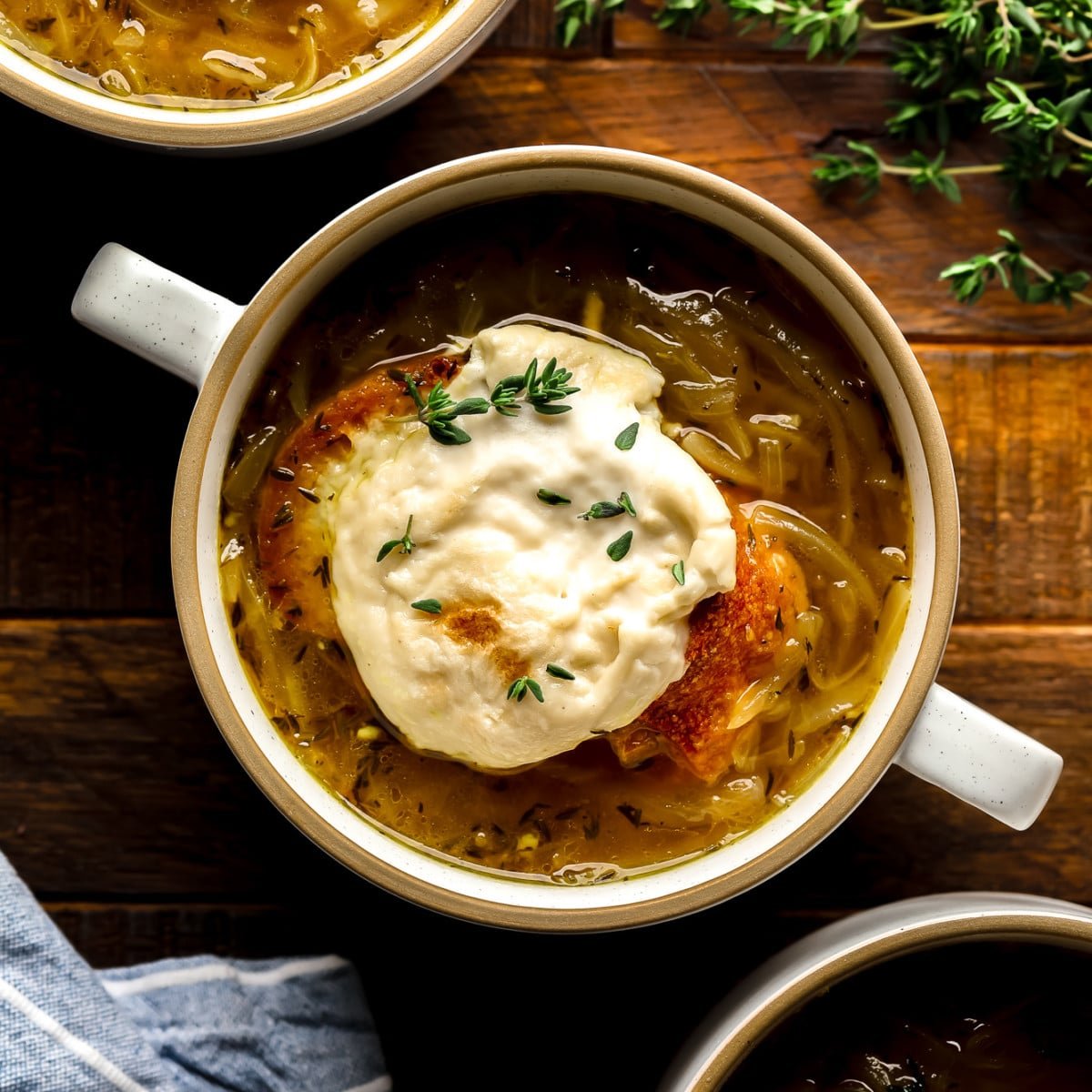Chouquettes: French Cream Puff Recipe
Dinner in Paris generally starts at 8 pm, especially in restaurants, and I get ravenously hungry between lunch and dinner. Parisians do dine rather late – often not until 9:30 pm or later, and that’s an awfully long stretch. So French people visit their local pâtisserie for an afternoon snack, known as le goûter, although nowadays Parisians often call it le snack. Le snack is often…
 Warm up with a steaming hot bowl of Vegan French Onion Soup topped with toasted bread and stretchy, gooey vegan cheese. It’s easy to fall in love with this savory, caramelized onion-packed comfort food! Treat yourself to more warm and cozy vegan soup recipes, like my Vegan Broccoli Cheddar Soup, Spicy Peanut Soup, and Vegan…
Warm up with a steaming hot bowl of Vegan French Onion Soup topped with toasted bread and stretchy, gooey vegan cheese. It’s easy to fall in love with this savory, caramelized onion-packed comfort food! Treat yourself to more warm and cozy vegan soup recipes, like my Vegan Broccoli Cheddar Soup, Spicy Peanut Soup, and Vegan…



 This eye-catching Vegan Fruit Tart features rows of glistening glazed fruit layered over a decadent custard in a homemade sweet tart crust. A fancy dessert for any occasion! Treat yourself to more elegant vegan desserts, like my Vegan Creme Brulee, Vegan Pain au Chocolat, and Vegan Strawberry Cheesecake. Would it shock you if I told…
This eye-catching Vegan Fruit Tart features rows of glistening glazed fruit layered over a decadent custard in a homemade sweet tart crust. A fancy dessert for any occasion! Treat yourself to more elegant vegan desserts, like my Vegan Creme Brulee, Vegan Pain au Chocolat, and Vegan Strawberry Cheesecake. Would it shock you if I told…